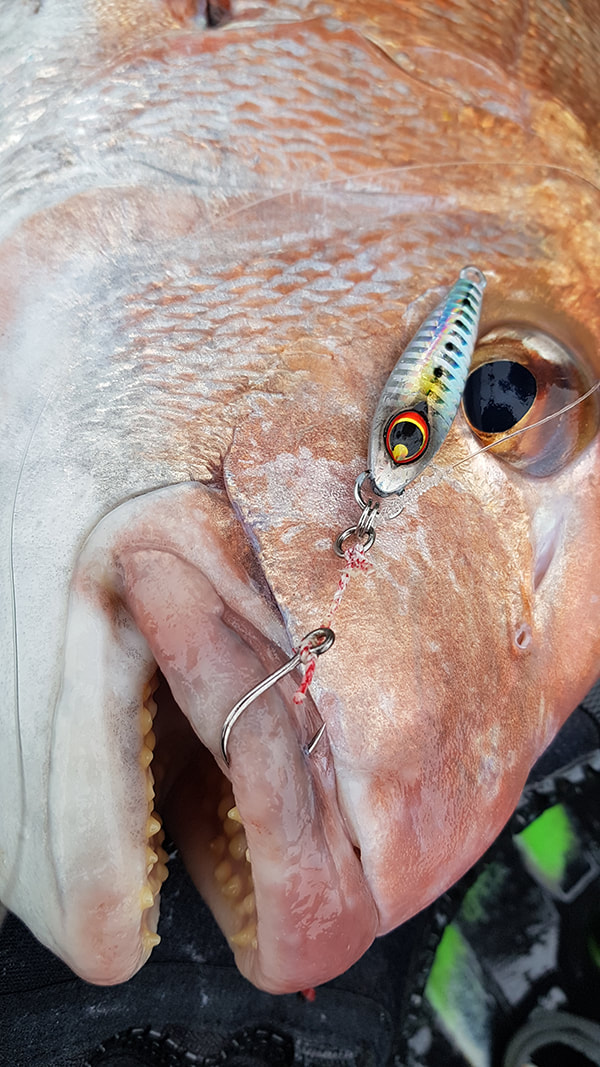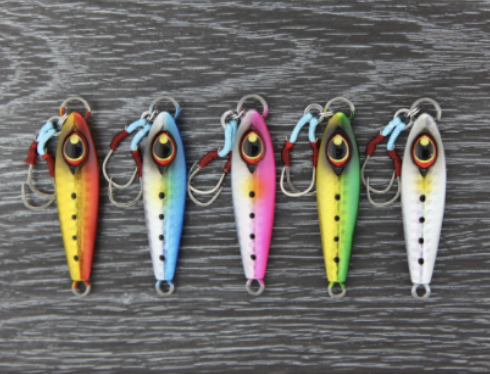|
Reviewed by Rob Fort
Zest Gan Jigs
|
Lure fishing is constantly proving its effectiveness here in New Zealand, and since the introduction of softbaits, we have seen an onslaught of other options. Jigs are one of those ‘other options,’ and they have kept me and many others committed to using artificial lures. Most anglers are aware that choosing larger lures often gives a much better chance of attracting a bigger fish. And yet my years of softbaiting experience have also reinforced the discovery that smaller sizes can also produce the goods. Now with more than ten years of jigging experience, the same pattern is starting to become apparent with jigs.
|
|
Jigging started with large jigs associated with mechanical techniques for kingfish. I soon learned that the same jigs also attracted other fish of varying sizes, although catching them wasn’t that consistent. That changed though, as a result of exploring ‘down-sizing’ to jigs associated with slow pitch and micro jigging. Since then, success has been consistent and it’s fair to say that a large amount of fishing time is now spent using smaller jigs. The smaller jigs have also caught their share of big fish, which has further proven their potential. During recent months, even smaller jigs have been my preference, and have continued to provide success with some surprising results. It’s hard for many anglers to appreciate how effective these types of jigs, are but it’s obvious that they do represent a part of the food chain many species take consistently.
My intense interest in small jigs hasn’t gone unnoticed, and a parcel from BCS Enterprises turned up with some new Zest Gan Jigs inside. It felt like opening a box of jewellery, with the small size and finish on these jigs immediately catching my eye. The jigs are twenty-eight grams, and available in five colours. They have a quality finish, as you’d expect to find with Zest jigs, and have nicely shaded detail including a realistic eye on one side. The colour choice also gives plenty of options that will cater to the different preferences of fish on any given day. They are shaped for performance with one rounded side and the other side having a scalloped face. The jigs also come rigged with twin assist hooks, and although small in size, are certainly solid enough. The hooks are extremely sharp, and the design easily penetrates with the slightest pressure, or even, it would seem, a brush with the slightest contact. Although strong, the fine gauge hooks require some care when applying drag pressure to hooked fish. Although these hooks look great straight out of the packet, my personal preference is to use my own assist hook rigs. Finally, a break in the weather meant the Gan Jigs could be put in front of some fish. It’s hard to know what to expect when winter fishing; it can be quite variable and challenging, and would certainly put the jigs to test. I started quite shallow, in about twelve metres, and observed the action of the jig as it went down out of sight into the depths. Initially, it went horizontal, producing a flutter, causing the bottom end to rise up above the top, then it proceeded to dive in a sliding action while moving in a circle motion. It travelled down at a medium to fast rate, but the speed can be regulated by controlling how quickly line comes off the reel. Adding a pause by thumbing the spool causes the Gan Jig to stall and flutter. This consistent sinking action allowed them to be fished in a range of depths ̶ I used them to twenty-seven metres deep during the session. Initially, I was more interested in getting the jig down to the fish, so I let it sink directly below me to the sea floor, and was rewarded instantly with a legal snapper. What followed was an amazing six hour session dedicated to exploring the performance and the capabilities of the Gan jig. With many of the snapper around legal size, I had to keep looking for the better table fish. The green Gan jig consistently produced snapper no matter what method was used, although it did receive a lot of attention when at rest as well. At one stage the jig hung just above the sea floor with rod placed under my leg so lunch could be eaten. It didn’t take long for a snapper to become connected, nothing other than the subtle motion of the kayak had produced the result. The success continued with a few better snapper staying on board when something of size came across the jig. By now the jig had caught over twenty five snapper and one of them was more than halfway to the magic 20 pound mark. Despite this the jig showed minimal damage from the snapper’s powerful jaws and teeth. Changing to the silver colour immediately produced similar results, and the continued success soon filled the bin, but best of all, an even bigger snapper than the previous best, on the Gan jigs. The session has left me pumped and eager for more trials of the Zest Gan jigs, and with the spring snapper about to grace us with their presence, it’s clear that these jigs are going to account for many more of these fish being caught in the future. The size and shape of these lures matches well with local baitfish, so I have no doubt that other species will also be attracted to them. With the twenty-eight gram size already proving deadly, I can’t wait for other sizes to follow. |


